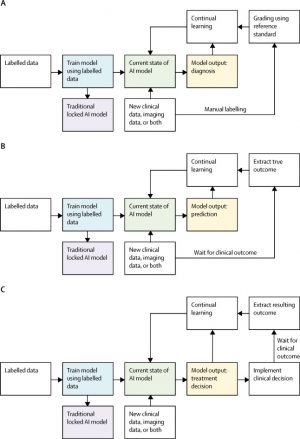In a recent commentary in The Lancet Digital Health, Dr. Cecilia Lee and Dr. Aaron Lee address artificial intelligence and its role in the practice of medicine, specifically potential uses for continual learning models. Continual learning is a type of machine learning in which the model continues to learn and improve as it receives new data while retaining what it has previously learned.
This ability to continuously fine-tune their performance makes continual learning models better suited for certain complex tasks than the more traditional machine learning devices used in clinical practice today. But the fact that they constantly update and change also makes these models more complicated to implement into patient care systems. The authors discuss the practical, ethical, and regulatory issues that must be addressed before these models can be fully integrated into clinical practice.
One of the biggest challenges for these models is overcoming the problem known as catastrophic interference, which occurs when new information interferes with what the model has already learned. This can lead to a decrease in performance while the model processes the new data. A temporary lag in performance is not so concerning when continual learning algorithms predict movie preferences, for example, but could have serious implications in the health care setting. The authors consider some approaches for managing this problem.

Some of the potential applications for these models include diagnostic testing, predictive analytics, and even performing clinical management in real time (such as optimizing drug dosing or managing ventilator settings). Each of these potential uses carries its own set of considerations and challenges, which the authors discuss. They also point out some of the regulatory concerns associated with the implementation of these models, such as how to evaluate their real-world performance.
For clinicians, learning from mistakes is an important component of becoming a better doctor. Continual learning models, amazingly, can learn in a similar fashion. It will be important for the medical community to understand how these models work, implement them cautiously, and establish systems to respond when errors occur. However, as the authors state, the potential benefits of this powerful method are impressive and might ultimately change the practice of medicine.
Lee CS, Lee AY. Clinical Applications of Continual Learning Machine Learning. The Lancet Digital Health. 2020 June 1. Volume 2, Issue 6, E279-E281. doi: https://doi.org/10.1016/S2589-7500(20)30102-3.

